The seller proclaims the car is “RARE” and I agree. This blue 1963 Pontiac Grand Prix is for sale here on craigslist near Pittsburgh, Pennsylvania for $7,500. What makes this car “rare”? The engine is the big block 421 CID. It also has the optional Hurst four-speed transmission. According to conceptcarz, there were only 5,157 Grand Prix cars with a four-speed made in 1963. Fewer yet of these models were ordered with the 421 engine! Pontiac wanted their cars to go fast in a straight line. Add these to the list: bucket seats, factory tach, vacuum gauge, and console. Check this out: it also has power windows! One thing is missing. The car does not ride on the unique 8 lug wheels available in 1963.
The condition of this car is good. From the pictures posted, the blue interior may just need a good cleaning. Another plus is the car is complete down to even the original jack and spare tire in the trunk. Photos of the engine compartment would have been nice. Being a car from Pennsylvania, rust may be a problem. The inclusion of the Pennsylvania bicentennial license plate adds to the charm of this car.
This is the second year Pontiac offered the Grand Prix. I think the asking price is reasonable. The sale price on a fully restored Grand Prix is on the rise. Is this your next project? Do you consider owning this Pontiac the Grand Prize (Prix)?





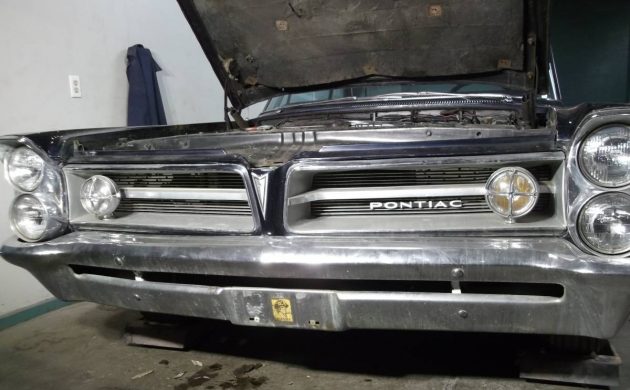

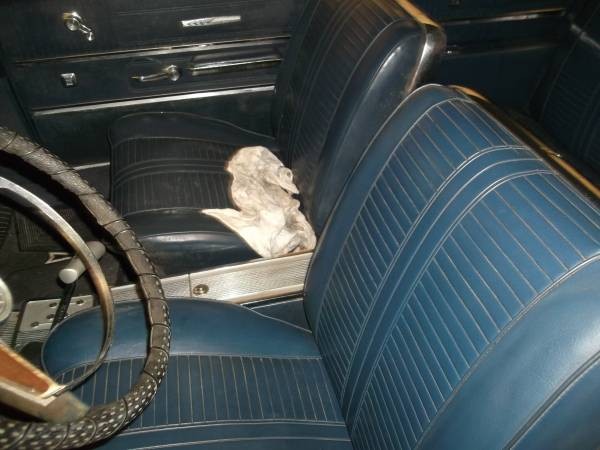

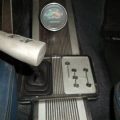
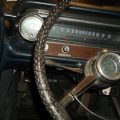
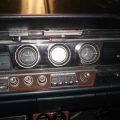

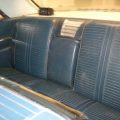

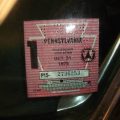
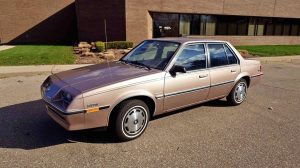

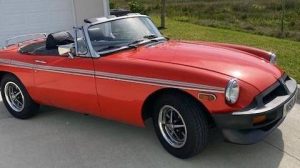
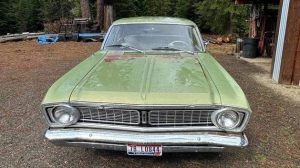


I like the car, not so sure I like the seller’s “ground rules” for a potential buyer: “you like it, buy it, you don’t like it, don’t buy it. you nit-pick it, i’ll throw you out.”
He sounds a little off. If he has his own shop then he should fix this up. He has it overpriced a little but these are great cars and I think they put out over 320 hp in 63
Yes…why doesn’t he restore it?
Seems like a no brainer.
I’d love to have it..
He sounds like a guy who has had a belly full of nonsense in the past . I have dealt with time wasters and guys who know exactly what they want and are respectful of their surroundings when standing in my shop . Not enough room here for my bad experiences with the former…
Mmm, hmm. True. Anyone who has ever sold a Volvo is nodding vigorously in agreement with your comment right now!.
seller sounds introverted
“For Sale As Is” would suffice without the braggadocio…especially for astute classic car buyers.
Hey Ben, nice write up. Remember, “Hurst” only refers to the shifter and linkages. The 4-speed transmission was probably a Borg Warner T-10.
Why are people so obsessed with the jack and/or spare tire that was never used? That would be on the bottom of the list of things I’m concerned about in a classic car.
So true, keep that 14 inch crap out of my trunk…..haha
A Grand Prix 421, with a Hurst 4 speed for $7500 ? My only surprise is that he still has it !!! For me it would total out nearer $10,000, with shipping, insurances, etc, so I’ll have to pass, would also make a great GTO clone 😊
Grand Prix was bigger than the Tempest/GTO platform. It would not make a good clone, but it could be a big brother/sister.
GTO clone???????
Pontiac never really had a BIG block or a SMALL block engine. All of their V8 engines were based on the 287 cubic inch engine that came out in 1955. By boring & stroking it, they were able to take all the way to 455. Now that’s what I call engineering. See attached for more information.
With an oversquare bore of 3.75 inches and stroke of 3.25 inches, the initial displacement was 287 cubic inches, but the generous 4.620-inch bore centers left plenty of room for displacement increases. The engine was soon upsized to 317 cubic inches for 1956, and by 1970 it eventually reached a whopping 455 CID. Unlike the V8s from other carmakers, there is no “small-block” or “big-block” distinction. All Pontiac V8s are based on the original 1955 architecture, regardless of displacement.
Wow – I can safely say I learned something new today.
You beat me to it! I have a 67 Grand Prix with the 400. Same external dimensions as all other Pontiac V8s!
I can only chuckle when folks say “big block” when referring to Pontiac powerplants! Must be a Chevy moniker, LOL!
Don Page,
When it comes to American assembled Pontiacs you are 100% correct. But there is a series of Pontiac vehicles that DID have a small block; the 1960s Canadian built versions were available with the small block Chevrolet, mostly 327 versions.
The Canadian Pontiacs were all messed up with the Pontiac & Chevy blending.
A Chevy small-block in a Pontiac is still a Chevy small-block. There’s never been a Pontiac “small block”. Regardless of the strange brews north of the border. LOL
And if you thought the first V8 Pontiac was 1955, here’s something that might surprise some of you. In 1932, Pontiac put a V8 in their cars. It was actually a leftover Oakland engine.
From Hemmings Motor News
Even as the country fell into the Depression and new-car sales slumped dramatically, Pontiac was still doing relatively well; meanwhile, Oakland sales were falling precipitously. Recognizing that it had a potential winner on its hands, GM management decided to euthanize the ailing Oakland brand, rolling it into Pontiac.
This occurred as the ’32 models were rolling out, and consumers were shown the new Pontiac 302-series of V-8 powered cars, which rode on the former Oakland’s 117-inch wheelbase, though displaying new coachwork that maintained the outward cues of the recently restyled 402-series six-cylinder line. This yielded models that were quite regal for a car line intended to deliver value. The V-shaped grille used lots of chrome, emphasized by new free-standing, chromed headlamps that no longer utilized a tie-bar; a pair of chrome horns lent additional style, echoed by a pair of chrome-housing taillamps. The hood sides gained four ventilation doors per side, replacing the more common louvers of the prior year’s model.
There were significant engineering advancements as well. The V-8 engine itself, mostly an Oakland carryover, featured a 3 7/16 x 3 3/8 bore and stroke making 251-cu.in. and 5.2:1 compression, using a one-barrel Marvel carburetor for a rating of 85hp. It was unusual in that it utilized a 180-degree, “flat-plane” crankshaft, rather than the 90-degree “cross-plane” design used by Ford and Cadillac; the resulting vibrations were quelled using a block-mounted “vibration suppression synchronizer” that pushed against the engine rhythmically to oppose its rocking motion.
Pontiac also featured new three-speed transmissions with synchronized second and high gears and a “freewheeling” device that enabled coasting when the throttle was released without depressing the clutch. For 1932, Pontiac offered Ride Control: driver-adjustable hydraulic shock absorbers, operated via a knob on the dash that altered internal valving.
But the ’32 Pontiacs would soon prove to be short-lived; the series 302 models were in production for only three months. When the ’33 Pontiacs debuted, eight-cylinder models boasted of an all-new straight-eight engine, now enveloped in new coachwork that borrowed many elements from the Chevrolet line. These new Pontiacs continued the trend of positive sales, but history was made with the unique ’32 and its V-8 engine.
they had big journal and small journal engines, you left that out
Maybe if the owner was a little more honest about the condition of the car (rust) he wouldn’t have to be concerned about someone nit-picking the car. The frame appears to be rusted.
I wouldn’t argue with the guy for a minute; just take my money, damn it!!! where else are you going to find the coveted 421/4-speed combo THIS complete??! YOU WON’T. 98% of these were 389’s; ask any Pontiac Club member well-versed in `61-`64 models; He will say, “If YOU don’t buy it, I WILL!!”
This is indeed a very rare car. I would like to have it but I don’t have the expertise to restore it. I also have a very rare car for sale. 1965 Catalina 2+2 2dr HT with the 421 tri-power, 4speed and 8 lug wheels. Check it out at https://collectorcars.fotki.com
Checked the link & didn’t find it !
That’s a beautiful car. Back in the early 70’s, my friend’s mother had one like that. Her’s was an auto.
Unless there’s a compelling reason to keep it original, upgrade the brakes and suspension and drive it.
Wonder how seller knows steering wheel has no cracks, with that leather wrap on it? Oops, there I go nit-picking, my bad! That one shot of the frame looks consistent with Pennsylvania road salt usage, SCARY!!!!
I had a 62 GP. Just out of the service, living the party life and the ladies loved the car. Black with red interior… Dam was da days…
This 63 all things considered is a good buy at the asking price…
Lost my first wife for reasons of health… She got sick of all my cars.
Present wife has set a four car limit, and when a new one shows up she invokes the “Sofie’s Choice” option. One has to go in the next 30 days… If it wasn’t for that I’d be a likely buyer…
Bing, I know this car is a Catalina, but it still looks close.
I wouldn’t have put them crappy over sized wheels with rubber band tires on the car Miguel I bet it rides worse than a fiero or any other small compact car
Übercool 62 Cat you found there,IMO Pontiac’s best looking fullsize ever!
Love big wheels on’em,hate the design of those fitted there…
Steve, I completely agree with you.
My first question for him will be if he has the original wheels, if not I will have to find some original steel wheel on Ebay or something.
I have to have my cars as original as possible.
Did I forget to tell you guys this is a 389 4 speed car from the factory?
Nice it survived !
A cool ride with just about all the right options!
I’m guessing that the seller realised how much rust there is in this particular GP and decided it was better to flick it off and help his cashflow than to make any further investments into it.
Hope it finds a good home…
Great car and I would love to own and drive this car …
BUT , HOW’S THE FRAME ???
I own a 63 GP. I think I like that car better than any other. Great driver. Would love to own this one too, just for the 4 speed.
One of the photos shows something very crusty underneath. Pennsylvania has a strict inspection program; in the ’70s, any rust-through on the frame or body would cause a car to fail. A rusty frame would explain why this car was removed from service in 1975.
So that’s how you learned to write in a public school
This is a really nice car. If everything is on the up and up, I feel that the price on it is more than reasonable. I hope that someone grabs this little classic up in a hurry.
Ok have had lots of people over the years say big block speaking of Pontiac. Because they don’t know any better. Oldsmobiles are the same way. They all share there demisions regardless of cubic inches
Oldsmobile had 2 different deck heights.
Other than deck height ,will 455 bolt in place of 350 and vice versa ?
wrong- Olds had true big block and small block, the 330-350-403 was a short deck motor, the 400-425-455 was a tall deck motor. and they all used interchangeable heads.
Pontiac had small journal and large main bearing journal engines, although the deck height was the same. 326-350-389-400 were small journal, 421-428-455 were large journal, 3″ vs. 3.25″
Quit Nit Picking the rust. Thats why Super GLue was invented
I Have a 1963 Pontiac Grand Prix. 8 lug wheels, 421 cubic inch engine. 2-door hard top. 4 speed hurst. It’s been in the garage since 1975. Any idea how much its worth?
These are great cars, I refer to this as the first Muscle Car, not as small as a 64 GTO, but still small and with a 421!
You can expect a Limited Slip rear came standard with a Four speed car and one thing that might not stand out is:
The 421 was more than just larger displacement. In 63 especially it was a NASCAR block and besides a steel crank, four bolt mains and balanced forged connecting rods-
It was hand assembled separate from regular production motors.
Me like!
da-cat,
If one is to determine what dictates an “American muscle car” based on offering a potent engine [usually a large displacement V8] in a lightweight body/chassis, and make it available to the American public, then it was Studebaker who first offered muscle cars to the general public, cars that could be bought from any Studebaker dealership.
To start, in 1956 Studebaker-Packard shoe-horned a big Packard 275 HP 352 V8 into the much smaller and lighter Studebaker 2-door hardtop coupe body [dating from 1953], and called it the Golden Hawk. While it was an impressive combination, the engine was simply too heavy. Based on the above criteria, the 1956 Golden hawk is the first American production muscle car, available at any Studebaker-Packard dealership.
Then with the loss of the Packard V8 engine factory, for 1957 and 1958 Studebaker amped up the challenge by changing the Golden Hawk’s drive line to the Studebaker 289 V8, and they added a belt-driven McCulloch supercharger, maintaining the 1956 Golden Hawk’s horsepower at 275. Compared to other American 100% stock cars of the time, nothing could touch the Golden Hawk in raw muscle power.
Then in 1963, The Paxton mechanical belt driven supercharger became available on ALL models of Studebakers, including the basic 2-door sedan Lark [now called the Commander]. While it was the 1963/64 Studebaker Avanti that broke the Bonneville salt flat speed records that remained with Studebaker for about 20 years, even the Lark based Daytona or Commander 2 & 4 door sedans were available with the high performance Studebaker Avanti engines, not just the Supercharged variants, but the twin four barrel carb versions, typically mated to a B-W 4-speed trans and “Twin-Traction” [AKA a posi rear diff]. And unlike ALL the other major US auto manufacturers, in 1963 Studebaker offered the Dunlop disc brake setup on the front wheels, along with a hydrovac power booster.
It’s well known that on seeing what the lowly independent Studebaker Corp. was doing to expand the horsepower race, Pontiac’s John Delorian pleaded his case before the GM top executives, to allow high horsepower big blocks in the LeMans and Catalina, and the rest is Pontiac history!